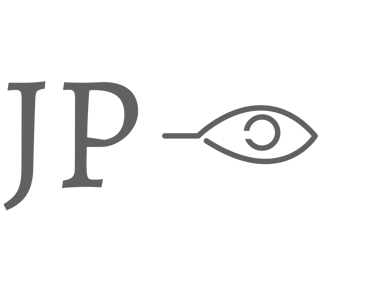Swiss Cheese & The Inevitability of Lack
Early unmet needs in parent-child relationships are a significant contributor to lifelong struggles with identity and connection. Lacan (1998) taught us how our formative experiences with caregivers shape both ego identity and relational frameworks. This phenomenon—coined the Mirror Stage—highlights the complexities of emotional development and serves as the foundation for which esteem is built. However, the pro-social learning process ingrained in our biology is fraught with imperfections, leading to gaps in our mental and emotional development. Think of these as lack, or "holes" that caregivers often cannot fill.
Maslow (1943) outlined the consequences to fundamental needs such as safety, belonging, and esteem being neglected. Erikson (1950) expanded on how these deficiencies stunt developmental growth; Piaget and Inhelder (1972) delineated how those deficiencies lay the groundwork for future relational dysfunction. Consider the child who—raised in an emotionally barren environment—finds themselves wrestling with profound insecurity, struggling to forge trusting relationships in adulthood. Bowlby (1969) emphasized the need for secure attachment during childhood and stressed that the most prolific holes in development were often carved out of neglect or abuse. However, the impact of these holes may vary. Lacan (1998) clarified that this feeling of lack can be real or imagined and yield a similar psychosocial outcome. One child may emerge resilient, while another may spiral into significant distress. Post-traumatic responses are informed by a confluence of genetic predispositions and the availability of external support.
The Swiss Cheese Model I have developed is a metaphorical representation of these unmet needs. A critical tenet of this model lies in its acknowledgment of individual variability. While the imagery encapsulates a universal experience of lack (all slices of Swiss cheese have holes), it also underscores the necessity for personalized therapeutic approaches (no two slices of Swiss cheese are identical). This is a call for psychoanalysts to tailor interventions to address unique issues experienced by their patients. An individual grappling with feelings of inadequacy stemming from a lack of parental affirmation may benefit from Rogerian (1961) person-centered therapy, which highlights the importance of unconditional positive regard and is aimed at bolstering esteem through ego-repair. Inversely, an individual battling feelings of existential isolation stemming from neglect/abandonment from caretakers may benefit from Frankl’s (1959) logotherapeutic intervention to derive meaning from their loneliness. Meticulous selection of approach is crucial for stitching the psychological fabric torn by the formation of these holes during development, and for subsequently providing psychical relief to the patient. As always, cultural and contextual factors also play a vital role in shaping the expression and perception of unmet needs. Analysts must remain attuned to these dimensions that shape their patients’ lived realities.
The theoretical implications of the Swiss Cheese Model compel researchers and practitioners to reconsider parenting paradigms, shifting from a simplistic view of unmet needs as parental failures to a more nuanced understanding of human relational dynamics. Caregivers will certainly screw up, often through unique circumstances, and always in ways that stunt an aspect of the child's growth. It is simultaneously inevitable and also not the end of the world; catastrophizing only serves to deepen the wound. This notion aligns with Winnicott’s (1960) idea of the “good enough parent,” who meets needs adequately yet imperfectly. Recognizing the inevitability of unmet needs encourages a compassionate approach to parenting, where the aim shifts from unattainable perfection to a sincere effort in addressing children’s needs, understanding that some holes will always persist.
Clinical applications of the Swiss Cheese Model apply to intervention against narcissistic endeavor, neurotic limerence, ego deflation, obsessions, hysteria, and so on. By identifying specific unmet needs, psychotherapeutic intervention may serve to excavate the roots of distress. Lacan's (1998) focus on the symbolic order—the realm of language and societal constructs—derives a scope for therapeutic intervention. Unpacking an experience of lack weaves a narrative essential for healing to occur; making sense of psychological turmoil induced by unmet needs can empower one to seek fulfillment and satisfaction in relationships by breaking trends and cycles that are non-conducive to adaptive pair-bond formation. This may serve as a latent—albeit indirect—antidote for unmet needs, as there is no direct methodology for "filling the holes" left by unmet needs. McCormick (2022) argued that humans can only ever experience life as heteromorphic beings. He referred to the subversion of the subject and dialectic of desire to depict how the pursuit of wholeness is an effect of being fragmented. However, broken pieces can be mended and imperfections should be celebrated (see the Japanese art of Kintsugi).
The Swiss Cheese Model offers a compelling lens through which to examine the complexities of unmet needs in parent-child relationships. By framing these needs as psychological "holes," the universal experience of lack that characterizes human existence is unveiled, labeled, and prepared for exploration. Drawing from psychoanalytic theory, this model illuminates the intricate dynamics of parenting and individual development, providing critical insights for resolving tension manifest in parent-child relationships. Navigating the multifaceted nature of unmet needs requires a compassionate understanding of the inherent limitations of parenthood. Recognizing the Swiss Cheese Model in clinical contexts enables a deeper appreciation for patient experience, paving new pathways to healing and growth. Addressing these unmet needs also encourages broader societal discussions regarding the significance of nurturing and responsive parenting.
References:
Bowlby, J. (1969). Attachment and Loss: Volume I. Basic Books.
Erikson, E. H. (1950). Childhood and society. W W Norton & Co.
Frankl, V. (1959). Man's search for meaning. London: Hodder & Stoughton.
Lacan, J. (1998). The Four Fundamental Concepts of Psychoanalysis. Norton & Company.
Maslow, A. H. (1943). A theory of human motivation. Psychological Review, 50(4), 370–396.
McCormick, S. (2022). Lectures on Lacan. The Four Fundamental Concepts of Psychoanalysis (Seminar XI).
Piaget, J. & Inhelder, B. (1972). The Psychology of the Child. Basic Books.
Rogers, C. R. (1961). On Becoming a Person: A Therapist's View of Psychotherapy. Houghton Mifflin.
Winnicott, D. W. (1960). The Theory of the Parent-Child Relationship in The Maturational Processes and the Facilitating Environment. Karnac Books.
